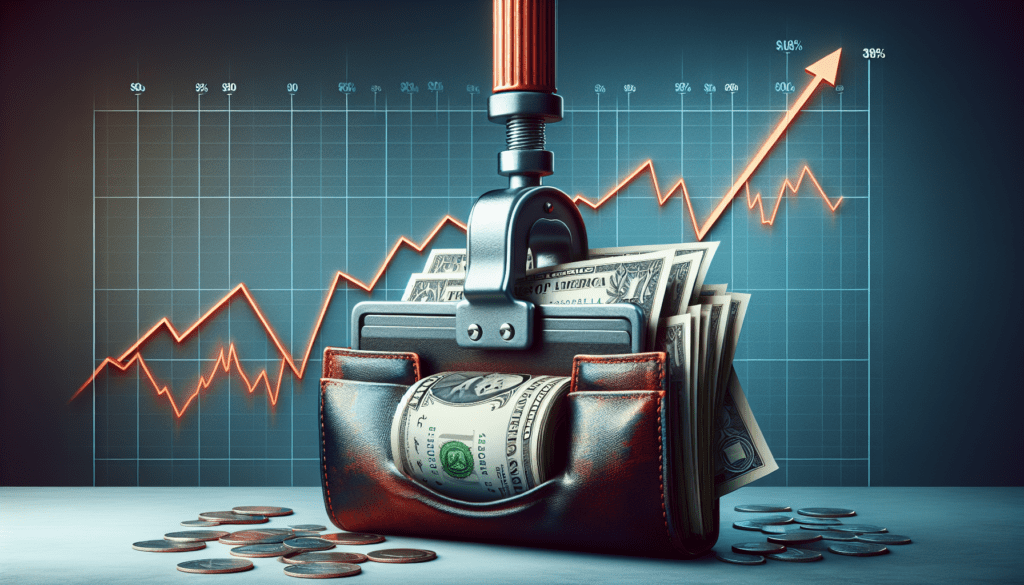In a recent announcement, the Federal Reserve has decided to keep interest rates at a 23-year peak, signaling no immediate relief for those hoping for a rate cut. This move comes as inflation remains stubborn, complicating efforts to ease the financial burden on Americans. The Fed’s stance indicates they are taking a cautious approach, aiming to balance economic growth with inflation control. Stay tuned for how this decision could impact loans, mortgages, and your wallet.
Win Up To 93% Of Your Trades With The World’s #1 Most Profitable Trading Indicators
In 2023, Americans saw a significant financial boost, pocketing an extra $235 billion in interest earnings, courtesy of the Federal Reserve’s economic strategies. This windfall came as a breath of fresh air for savers across the country, marking a dramatic shift from the previous years’ low-interest environment.
For those battling high-interest debt, the continual hold on rate cuts by the Federal Reserve might have been a setback. However, the silver lining has been bright for individuals with savings. The Fed’s cautious approach towards interest rates, aiming to see a more consistent control over inflation, has turned savers’ patience into profit. Particularly for those wisely choosing federally insured accounts offering the best returns, this period has been rewarding.
An astonishing comparison reveals that in 2023, the interest earned on savings soared to $315.4 billion across deposit accounts. This figure quadrupled from the $78.7 billion recorded in 2022, showcasing a lucrative year for savers. This surge is a direct result of the Federal Reserve’s aggressive rate hike campaign initiated in 2022, designed to combat inflation but also inadvertently benefiting savers. For the first time in years, individuals had the opportunity to earn returns on their US savings accounts, including banks, credit unions, certificates of deposit, and money Market accounts, that outpaced inflation.
The competitive yields didn’t stop with bank offerings. Treasury bills also emerged as a favorable option for risk-averse investors, offering returns comparable to the high-interest rates provided by banks.
This remarkable turn of events for savers highlights the importance of keeping a keen eye on economic trends and being strategic about where to park your savings. As the Federal Reserve navigates through economic fluctuations, the benefits for savers continue to evolve. For those looking to maximize their earnings from savings, the current climate presents a golden opportunity to grow your financial cushion.
With the right strategies and a vigilant approach to savings and investments, Americans can navigate through varying interest rate environments and come out ahead. The key is to stay informed and make well-judged decisions that align with the economic landscape and personal financial goals.
Win Up To 93% Of Your Trades With The World’s #1 Most Profitable Trading Indicators
1. Why did the Fed decide to keep interest rates high?
– The Fed decided to keep interest rates at a 23-year high because inflation is still a big issue, and they want to make sure it doesn’t get worse. By keeping the rates high, they are trying to slow down inflation.
2. What does it mean for me if the Fed keeps interest rates high?
– If the Fed keeps interest rates high, it means borrowing money, like getting a loan or using credit cards, could cost more. It also affects how much interest you get from savings, so you might earn more on your savings account.
3. How long will these high interest rates last?
– It’s hard to say exactly when the high interest rates will go down because it depends on how quickly inflation decreases. The Fed is waiting for clear signs that inflation is under control before they consider reducing rates.
4. Does this mean a rate cut won’t happen soon?
– Yes, the idea is because inflation is still pushing back, the Fed is not planning to cut rates anytime soon. They want to make sure inflation is really under control first.
5. How does inflation affect the Fed’s decision on interest rates?
– Inflation affects the Fed’s decision on interest rates because if prices of goods and services keep going up (that’s what inflation is), the Fed uses higher interest rates as a way to slow down spending and borrowing. This can help bring inflation back to a stable level.
Win Up To 93% Of Your Trades With The World’s #1 Most Profitable Trading Indicators
Win Up To 93% Of Your Trades With The World’s #1 Most Profitable Trading Indicators







I am not sure where youre getting your info but good topic I needs to spend some time learning much more or understanding more Thanks for magnificent info I was looking for this information for my mission